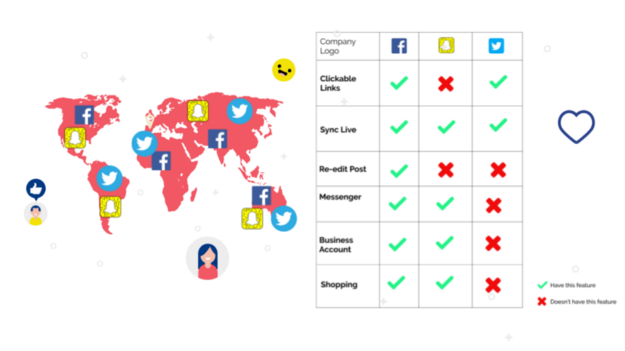
Bhuku has started collecting data on popular books. Inspired by goodreads.com, Bhuku wants to give a more user-centric approach to their app, adding features and flows that make it delightful for people to use.
Bhuku wants to develop an app that will help book lovers track everything they own, books they have read, what they will read next, etc. Apart from these general features, they also want to use the full potential that a mobile app has, such as utilizing the camera to register books in a more automated way via optical character recognition (OCR), sending notifications to users to keep them engaged, tracking their progress on reads (potential gamification), etc.
End-to-End Mobile App, Branding
Figma, Adobe Illustrator, InVision, Zeplin
UX Designer (Research, Visual Design, Interaction Design, Usability Testing)
Self Directed, with feedback from the mentor and peers
2 Weeks (80 Hours)

For this project, I decided to work on the 5th most used social network in the world that is INSTAGRAM. It uses posts, reels and stories to highlight the photos and videos that its users have shared. The app is primarily used to keep up with friends and favourite influencers in different fields and some brands uses it for shopping also
Instagram (commonly abbreviated to IG, Insta or the gram) is an American photo and video sharing social networking service created by Kevin Systrom and Mike Krieger. In April 2012, Facebook acquired the service for approximately US$1 billion in cash and stock. The app allows users to upload media that can be edited with filters and organized by hashtags and geographical tagging. Posts can be shared publicly or with pre-approved followers. Users can browse other users’ content by tags and locations and view trending content. Users can like photos and follow other users to add their content to a personal feed. (Source: Wikipedia)

Even if the problem has already been identified, it is too soon to go on to the ideation stage and devising a solution. Let’s begin with the research process.

For the competitor analysis, I decided to choose Instagram’s 3 big competitors, Facebook, Snapchat and Twitter. In the chart, you can different features these companies have and what features they don’t have. And this feature competitive analysis will help me to structure my further research.

A market positioning map depicts a brand’s aim or technical placement in relation to other brands. Two target properties are required to generate a positioning map (to plot the x and y axes). Here I have chosen Easy Interface + Hard Interface and Personal Content + Business Content as my two properties. And based on my two properties you can see where the competitors and
Instagram are currently and where Instagram wants to reach in future.
“An Affinity Diagram is a tool that gathers large amounts of language data (ideas, opinions, issues) and organizes them into groupings based on their natural relationships”
I interviewed 5 people to know more I collected my data and placed them on the Miro board by using sticky notes. Then I grouped the similar responses together and gave them a label. Read More